Sanguinaria canadensis, Bloodroot, is a native herbaceous perennial plant. It blooms very early in spring in deciduous woods when most plants have not begun to leaf out. It is hard not to spot these awesome white flowers against a backdrop of brown leaf mulch.
Flowers
Bloodroot (Sanguinaria canadensis), flowers grow singly on the end of a vertical stem about 6 inches long. The flowers are large for a spring woodland flower about 1.5 to 3 inches across when fully opened with 8 to 16 white petals. In the middle is the pistil with a pale green ovary with a short style and a cream colored two parted stigma. Surrounding the pistil are numerous stamens topped with conspicuous bright yellow anthers.
There is some variation in the flowers. This flower, the petals are alternating longer and shorter and gives it a sort of square outline.
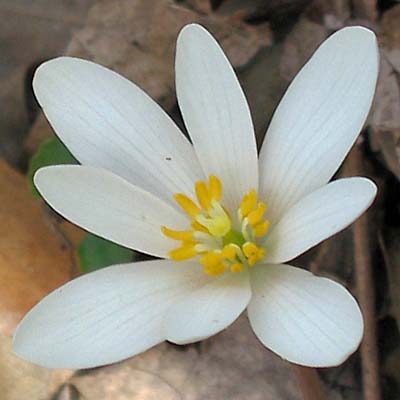
This flower has elongated petals.
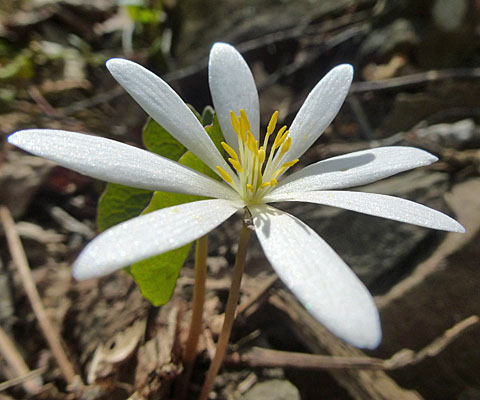
The first photo below shows a flower with a double row of petals while the flower in the second the flower has a lot fewer petals. The two parted stigma can be clear seen in the second.
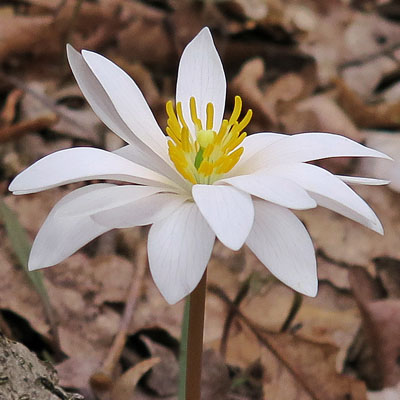
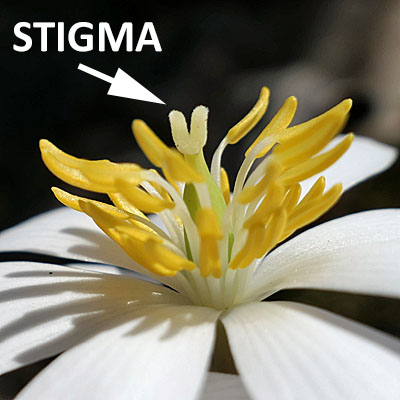
From the side view, no sepals are present under the petals. However, bloodroot flower has 2 sepals as it is emerging and they drop off quickly as it is no longer needed to protect the flower. The petals may be pinkish while still a bud.
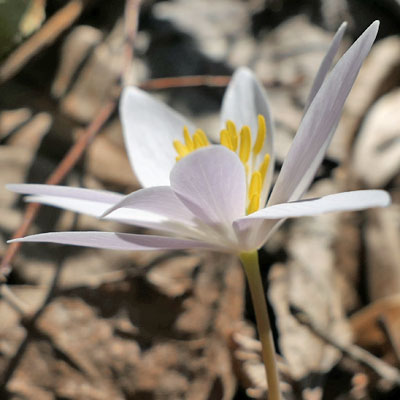
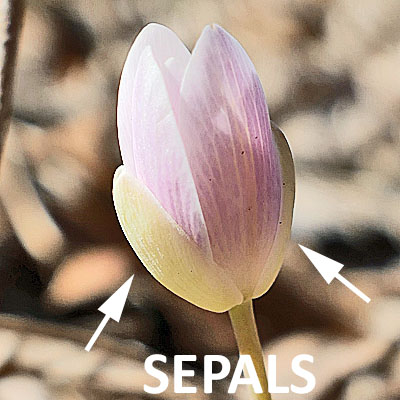
Pollination
Spring blooming woodland plants have the challenge of getting their flowers up and pollinated before the shade of the trees above forms. Early spring blooming woodland plants have the additional challenge of risky and uncertain weather so they must to be able to take advantage of the days that are warm and sunny. Bloodroot is an early spring bloomer and has showy flowers that no only attract us but insects too. Bloodroot only offers pollen to its pollinators and no nectar.
Much research has been done on bloodroot on how the flower synchronizes its activities with its pollinators. In order to not to waste pollen, the flower does not open unless the temperature reaches a certain value (~8degC ) so that its pollinators, mainly bees and some flies, are active. Also on cloudy day the flowers do not open as long and the flower closes when it rains and at night. The length of time the flower is open is also dependent of the temperature and sunlight.
On day one, the flower opens with the petals and the stamens/anthers bending outwards/reflexing. The stigma is already receptive when the flower opens. The flower is protogynous which means that the stigma is mature and receptive to pollen before the anthers release pollen. Then early in the day one, self-pollination can not occur since the anthers are not mature. A study showed that during this time, more than 50% of the flowers were cross pollinationed from pollen of other flowers. However, as the day progressed, a few anthers began to dehise (release pollen) but no self-pollination resulted. In the late afternoon, the petals and stamens move upwards and the flower closes. However, even in the closed condition the anthers and stigmas do not touch and there is no self pollination.
On day two, if conditions are right, the unpollinated flowers will open again as in day one. More anthers dehise so more pollen is available for transfer. More flowers are cross-pollinationed and a few get self-pollinated. In late afternoon the flower closes again.
On day three, if conditions are right, the unpollinated flowers will open again, however, the petals will reflex but the stamens will remain upright. During the day, the fillaments will bend so that the anthers will touch the stigma to assures abundant self-pollination. This is a backup plan for the flower.
When flowers become pollinated, self or cross, the stamens become withered and twisted within 12 hours.
Bad weather conditions did not interfere with cross-pollination. The flower longevity and stigma receptivity would be lengthened and the self pollination would be delayed.
The flowers generally last about 3 to 5 days.
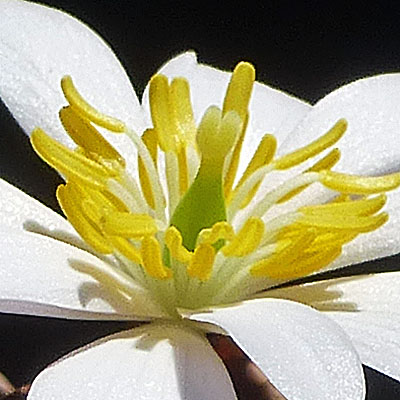
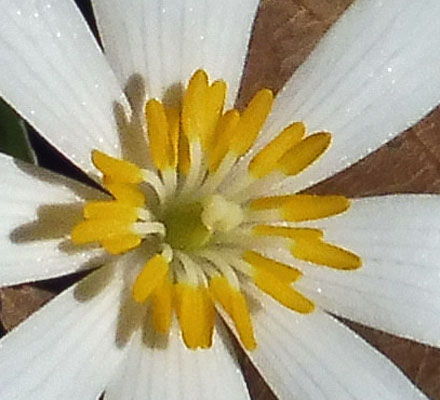
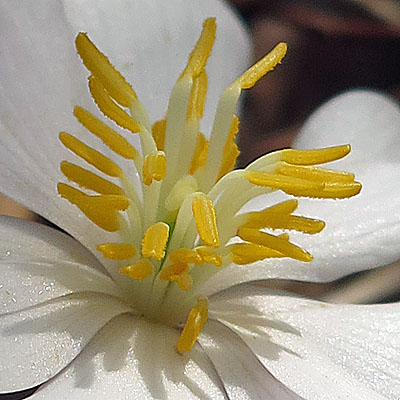
Showing day one and day two, here are several photos with the petals spread out and the anthers bent back away from the stigma. This would discourage self-pollination and promote cross-pollination.
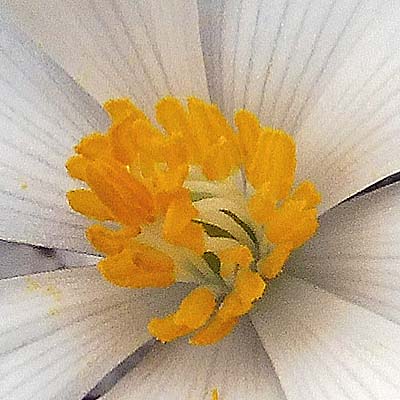
Showing on day 3, the photo on the left, the petals are extended outward but the anthers remain upright. During the day the stamens bend inward bringing the anthers over the green ovary and into contact with the stigma resulting in self-pollination. The energy spent creating the flower is not wasted! This self-pollination assures production of offspring in difficult times!
This pollination plan in bloodroot is termed 'facultative xenogamy'. 'Facultative' means optional/discretionay and 'xenogamy' means cross-pollination.
Self-pollination is refered to as 'autogamy'
Fruit
The seed pod is upright and about an inch long.
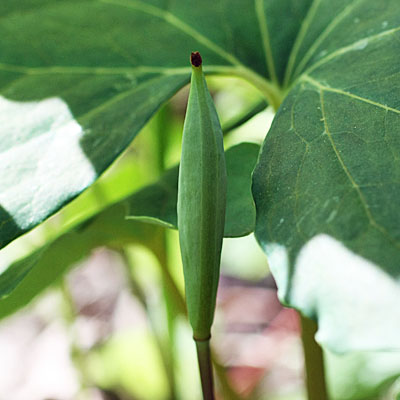
Bloodroot seeds with elaiosomes. Elaiosomes are fatty attachments to the seeds and are white in the photo below. Ants carry the seeds with the elaiosomes back to their nests, eat the eliasomes, and discard the seeds in their trash area where the seeds can germinate.
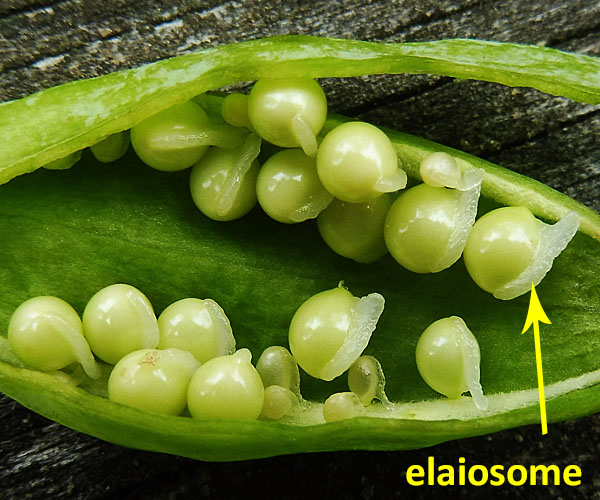 Immature seeds with attached elaiosomes. When the seeds mature they will be a dark brown. Close-up photo below.
Immature seeds with attached elaiosomes. When the seeds mature they will be a dark brown. Close-up photo below.
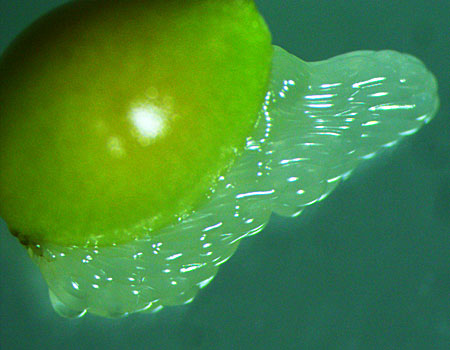
Leaves and Plant
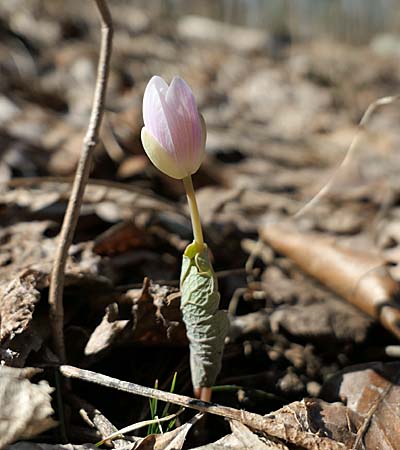
In the early spring the flower bud is wrapped by a leaf and begins to push out of the ground. The flower stem elongates and the flower bud is seen at the top of the stem with the leaf still unopened and wrapped around the lower part of the stem. The flower stalk is about 6 inches tall. After pollination, the leaves grow and expand to capture the light.
The leaves can remain and grow into the summer and even into the fall if conditions are right. Bloodroot is a spring blooming plant but not a true spring ephermal like spring beauty.
Bloodroot has only basal leaves that is generally circular in outline with 5 or more lobes with veins that radiate out into the lobes. The leaves are somewhat succulent. The mature leaves can be 5 inches across facing upward to the sun on sturdy stalks (petioles) so that can be 12 inches tall
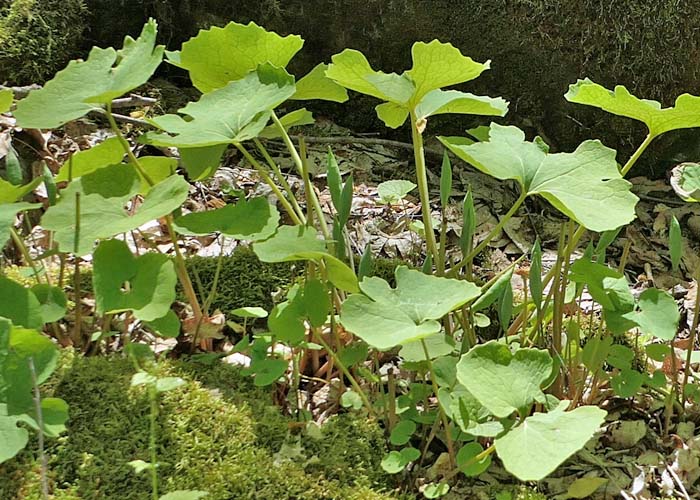 By the time the plant fruits, the leaves have grown upward over the flowers and expanded like an umbrella over the fruit.
By the time the plant fruits, the leaves have grown upward over the flowers and expanded like an umbrella over the fruit.
The leaves are some what variable but distinct. They are easy to identify.
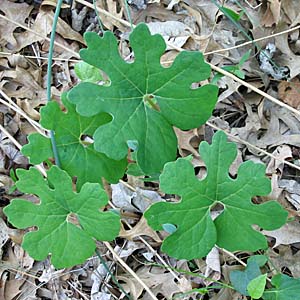
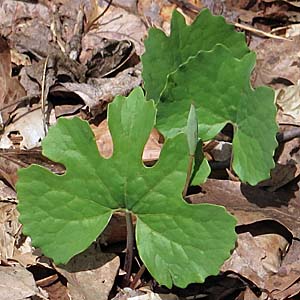
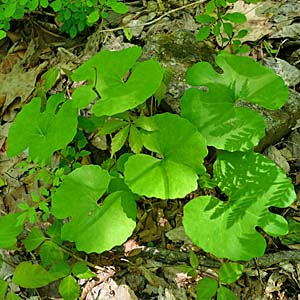
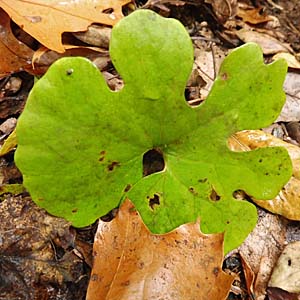
Habitat
Bloodroot thrives in the shade/semi shade of deciduous woods. They can be found along trails, in small patches as in the photo and on rocky ledges too. Take your spring hike early.
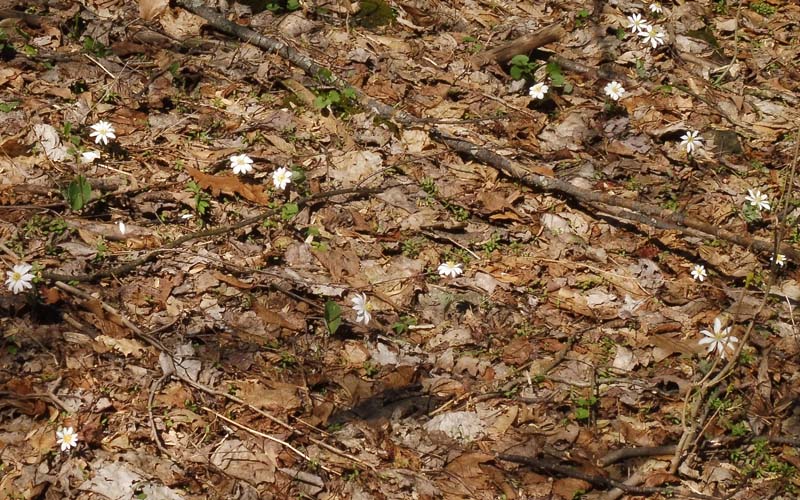
Cultivation
Bloodroot can be cultivated. It adds diversity to your garden. It is cheerful flower to look forward to after a long winter. It can flourish in a shady, woodland garden. These perennials will slowly spread. Please don't pick them from the wild. On the internet there are nurseries that sell them.
It likes moderately acid well drained loamy soil. It grows well in partial shade with moderate moisture.
Slideshow
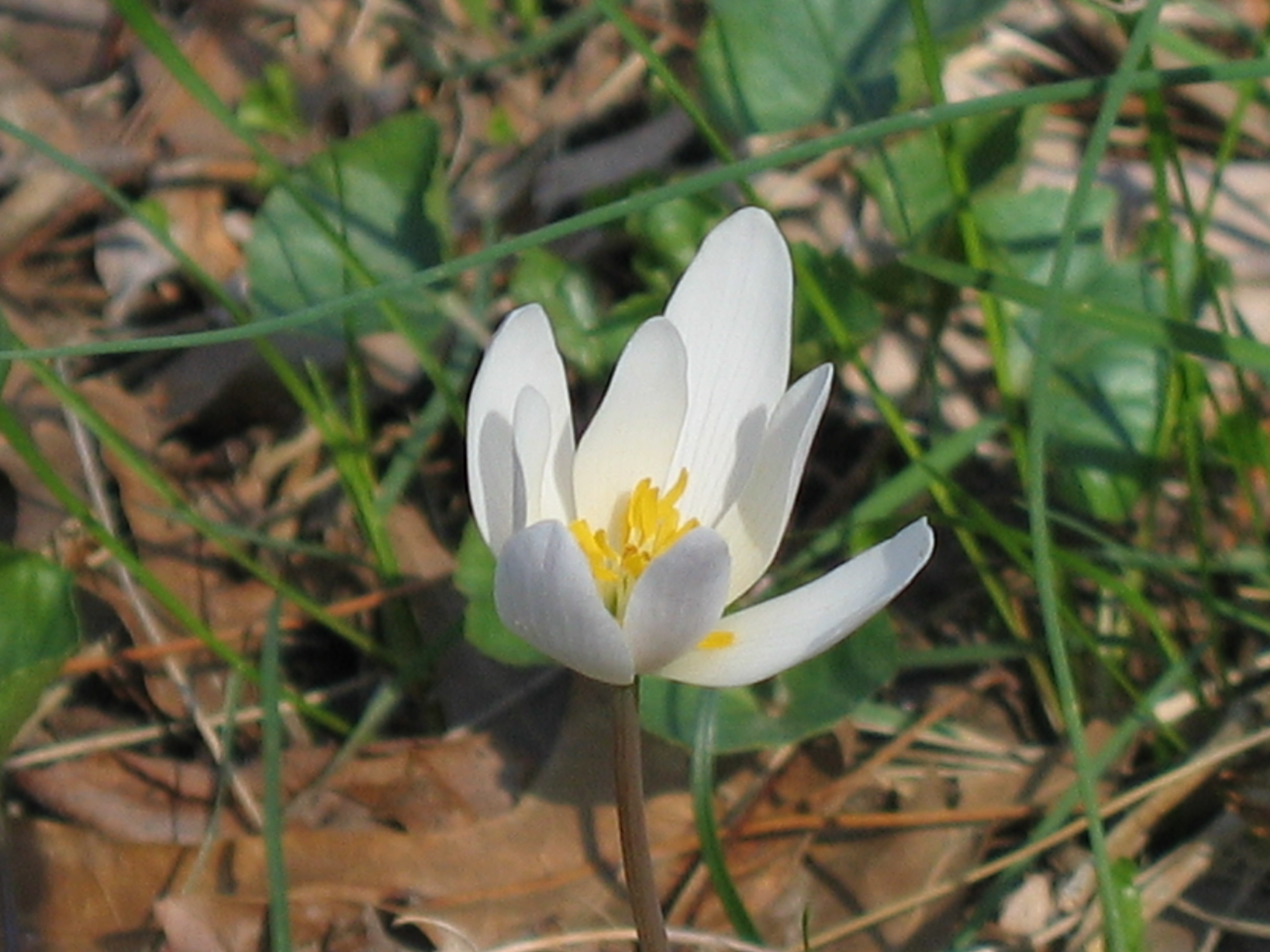
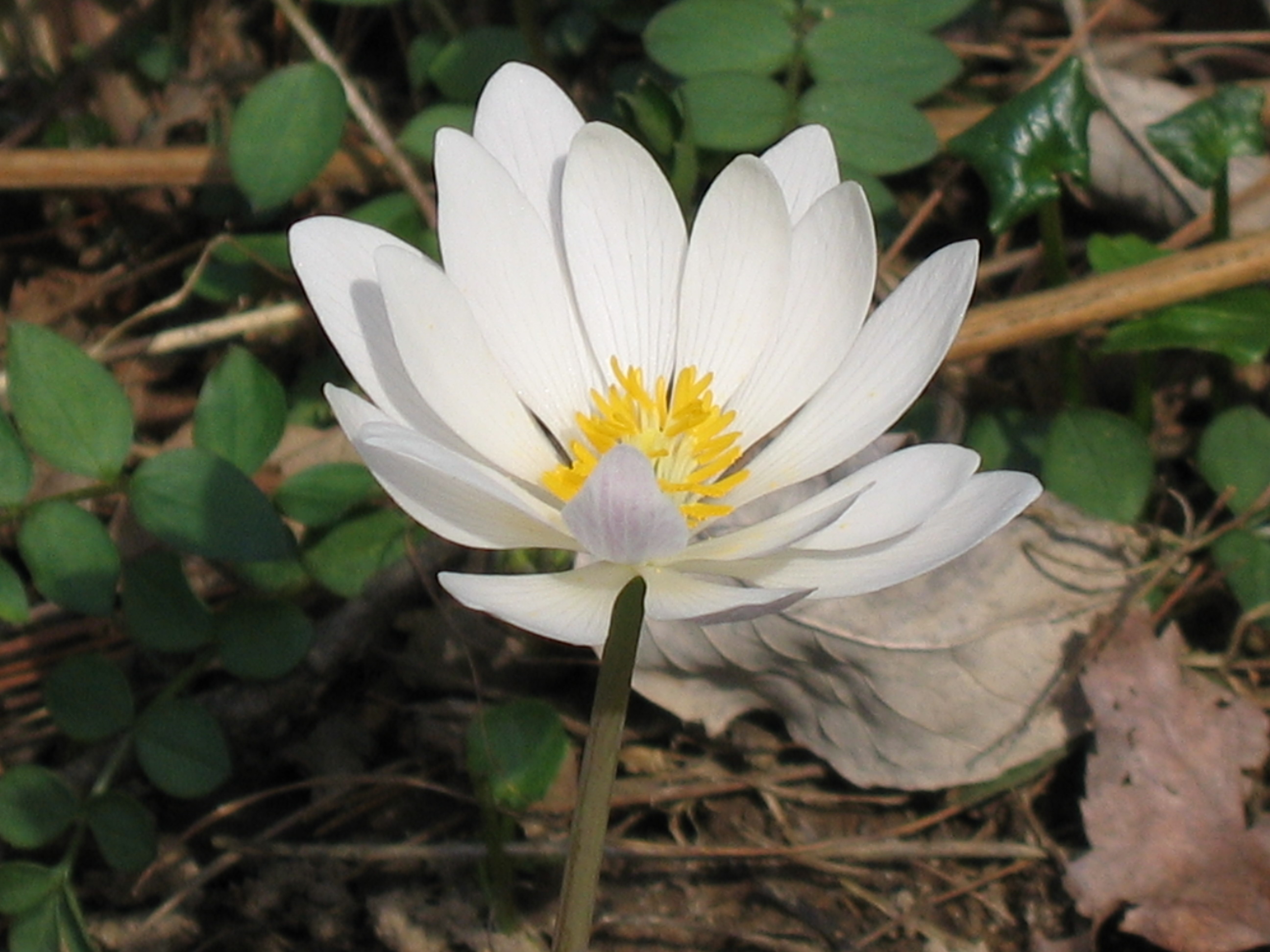
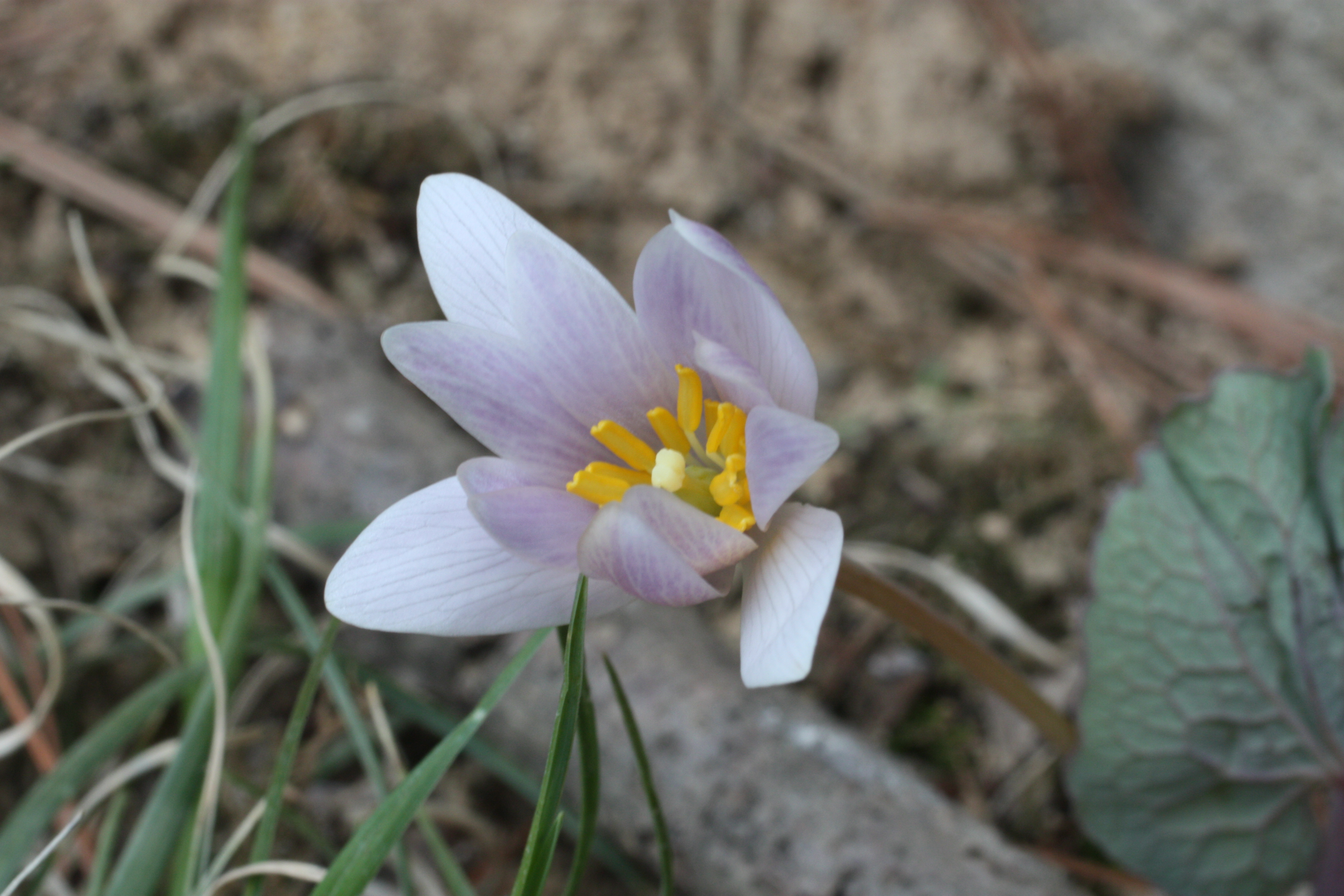
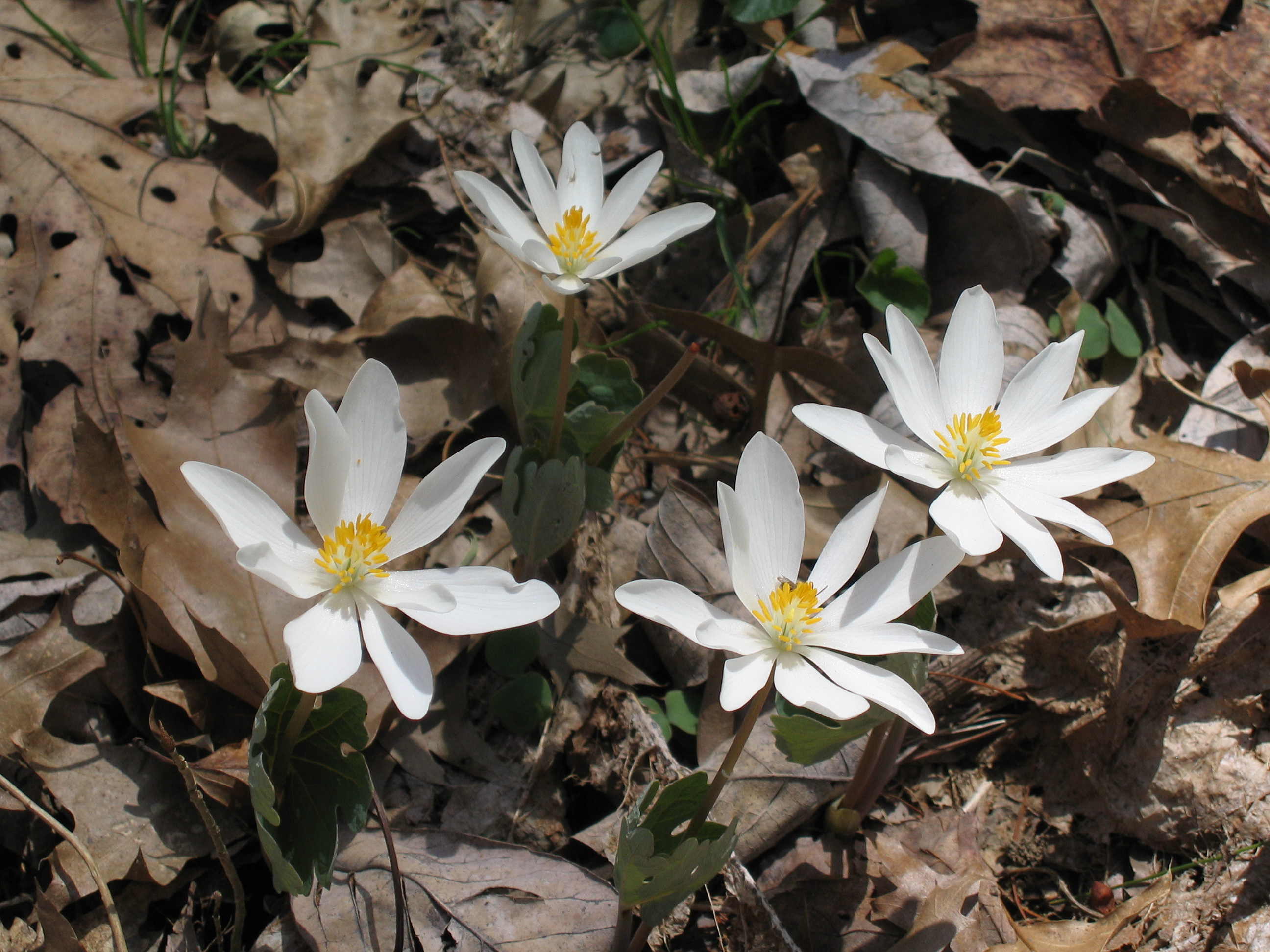
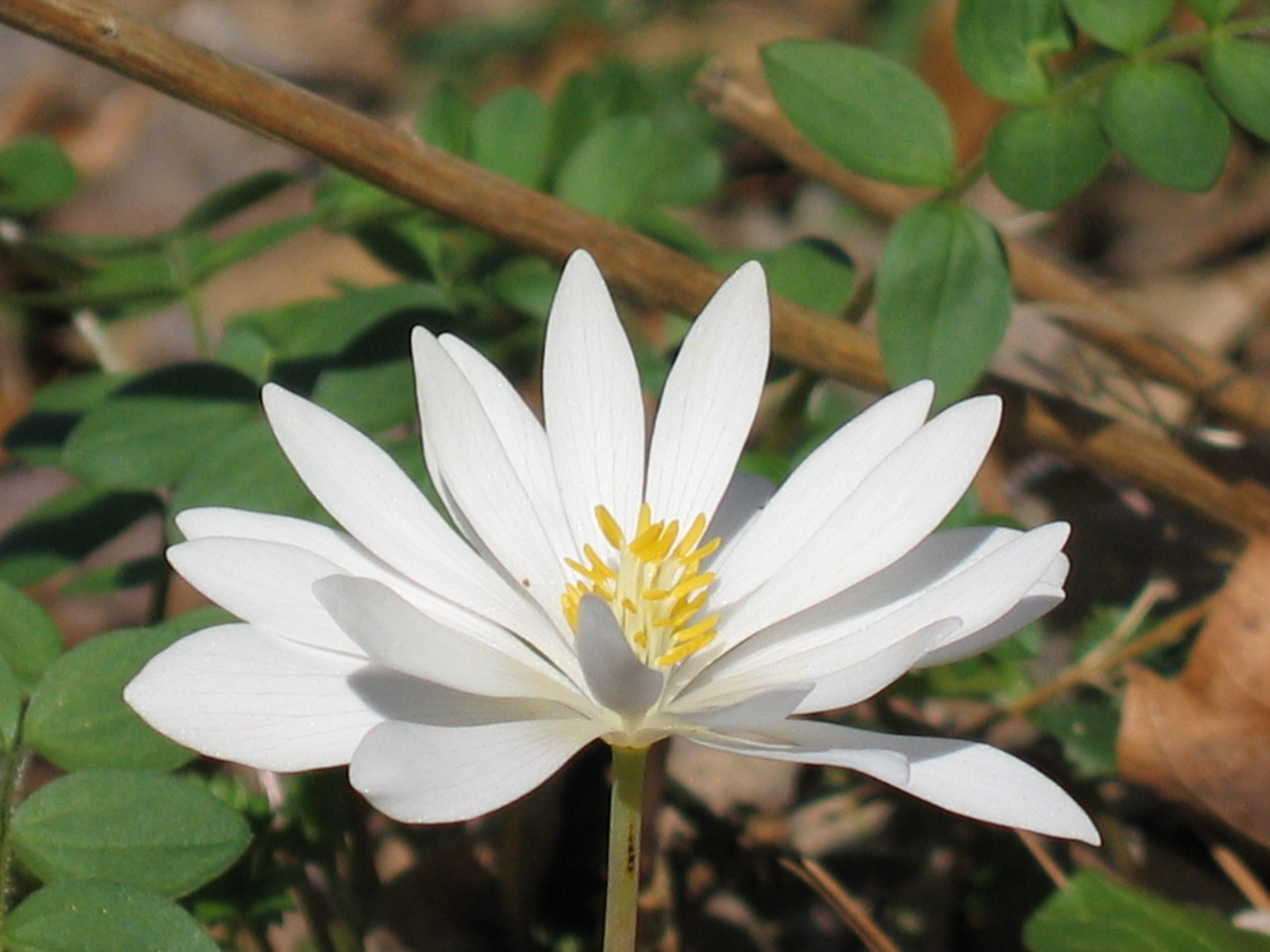
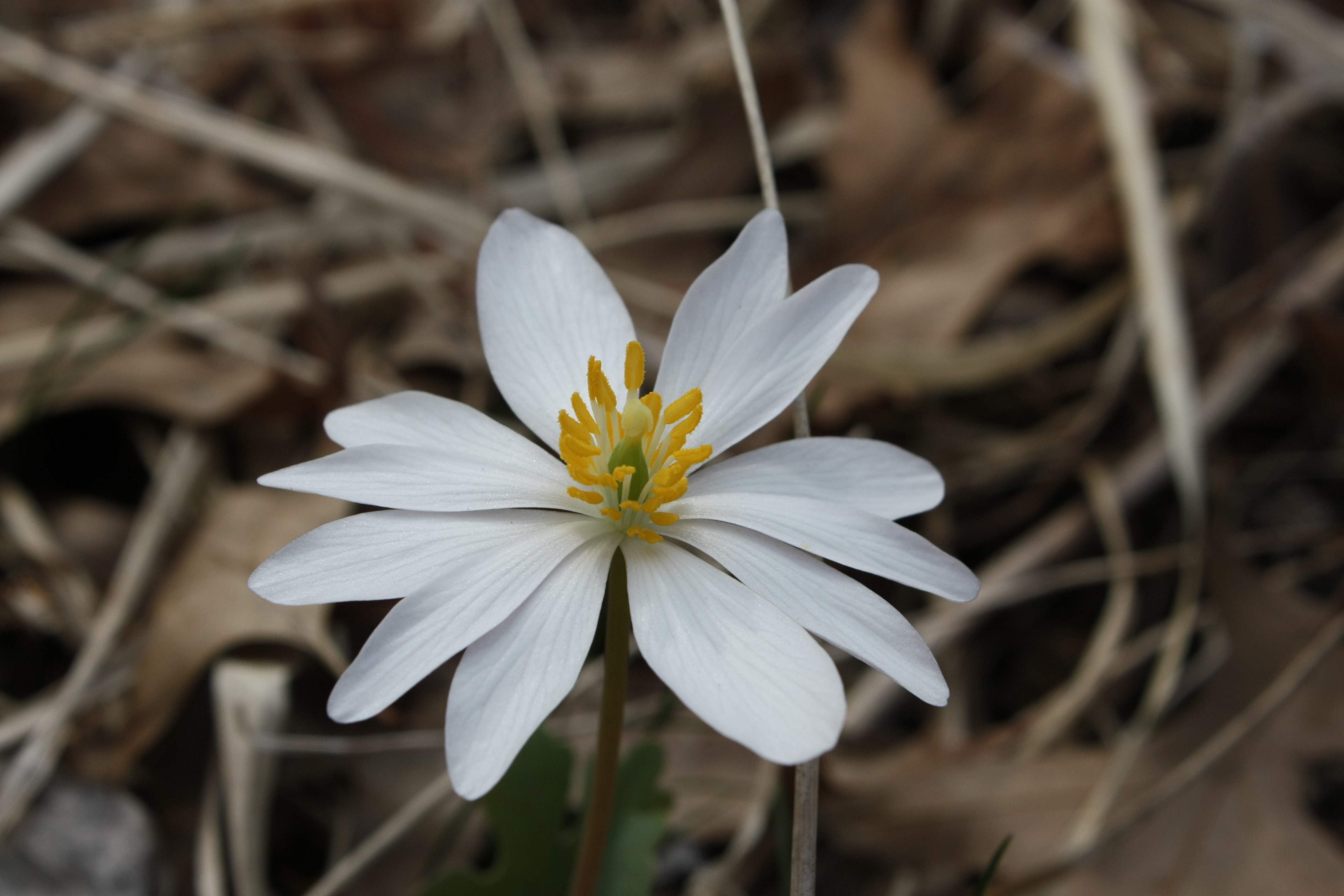
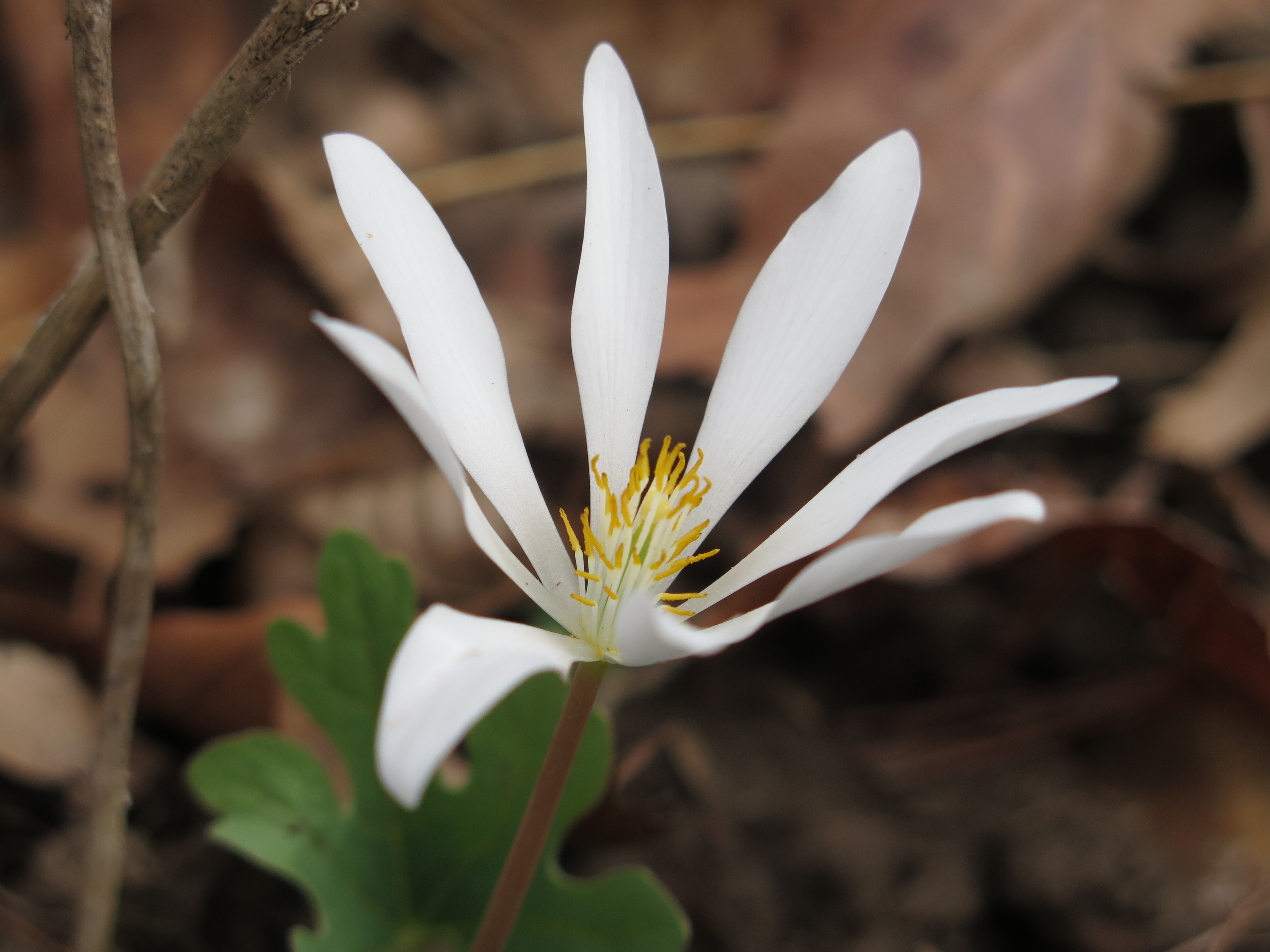
Text by Millie Ling. All photos by Millie & Hubert Ling: The flowers: early in spring - beginning of April; fruit in May/June. Location: in various parks/preserves in central & northern NJ and also in cultivation, NJ
Additional information / References
Additional information / references:
The USDA website : Bloodroot has a wide distribution in the east especially the north east, https://plants.sc.egov.usda.gov/home/plantProfile?symbol=SACA13
Easy to understand description of bloodroot pollination: Bloodroot Pollination: Bet-Hedging in Uncertain Times by W. John Hayden
Research paper on bloodroot pollination: Bee Pollination of Facultatively Xenogamous Sanguinaria canadensis L. by David L. Lyon This can be view free if you create a sign in (free)
Excellent description: https://www.illinoiswildflowers.info/woodland/plants/bloodroot.htm
Great photos: http://iowaplants.com/flora/family/Papaveraceae/sanguinaria/s_canadensis.html